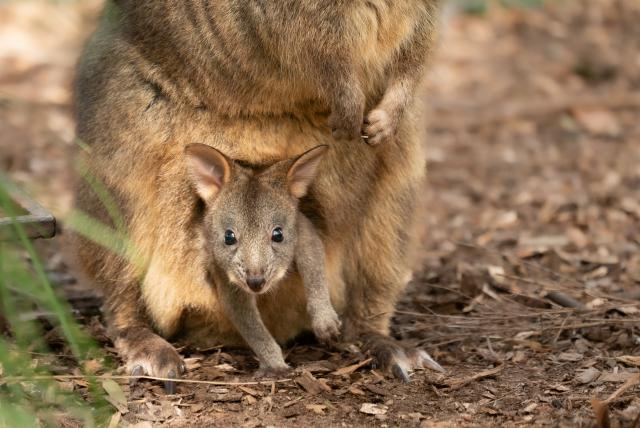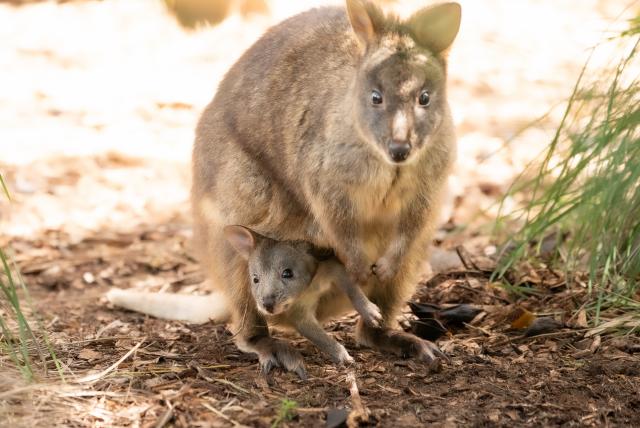A pair of pademelons at Healesville Sanctuary have welcomed a precious joey, with the little one popping out of the pouch for the first time.
Father Snug, and mother Binalong, [pron: Bin-ah-long] have been paired together since January and keepers have been patiently waiting to see a glimpse of the new youngster.
Healesville Sanctuary keeper Louise Tegg said the team was super excited when they first noticed movement in the pouch and then to see a head, the feet and a little tail poke out.
“We estimate that the joey is about six months of age. It is difficult to determine the exact age as the joey does all its early development in the pouch,” Ms Tegg said.
“We don’t know the sex of the new joey just yet. However, we’ll find out during its first health check at our wildlifehospital.”
The pademelon family can be found cruising around their environment, eating native grasses, foraging around in the soil and relaxing in the sun.
Although red-bellied pademelons are no longer found on mainland Australia, they can be found extensively across Tasmania.
“We’re still deciding on a name. But the joey will likely be named after a location in Tassie,” Ms Tegg said.
Healesville Sanctuary visitors can see the pademelons on the Woodlands Track along with three red-necked wallaby joeys.
The best time of day to see the little joey is around 11:00am and 12:30pm.
Threats to pademelons include, road traffic, loss of habitat and predation from introduced species.
Pademelons don’t have great awareness of cars and are often victims of road trauma-related incidents.
One way to minimise the risk of hitting wildlife, is to avoid driving at dusk and dawn when animals are more active.
Pademelons belong to the macropod family, which means they are related to Kangaroos and Wallabies.
They live in dense vegetation and wet forests that provide shelter.









